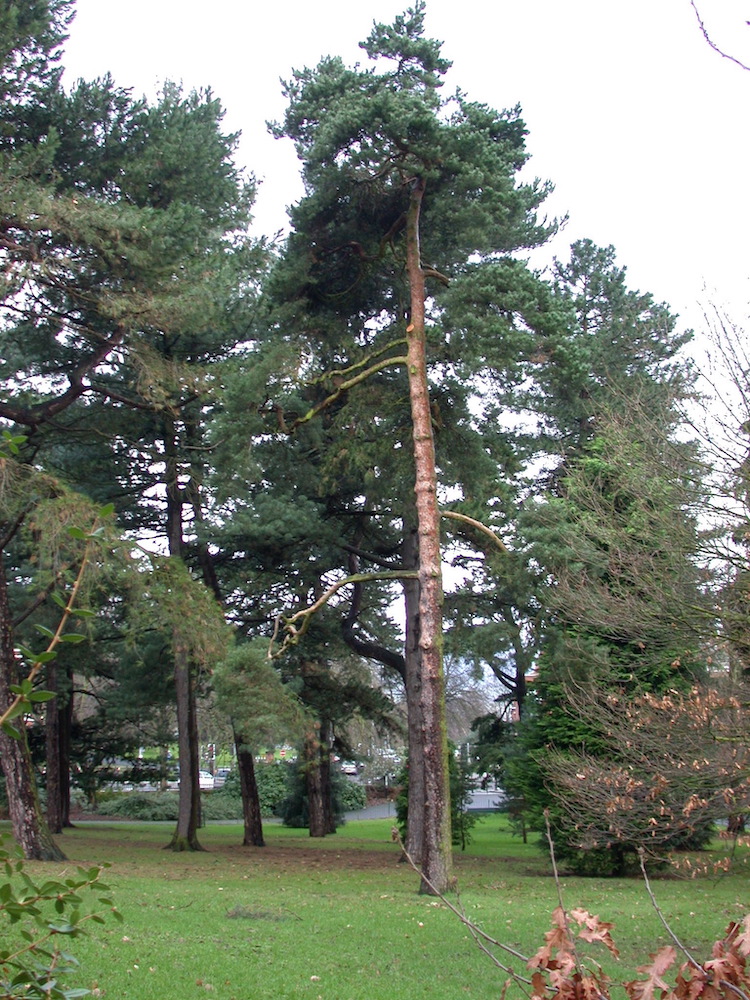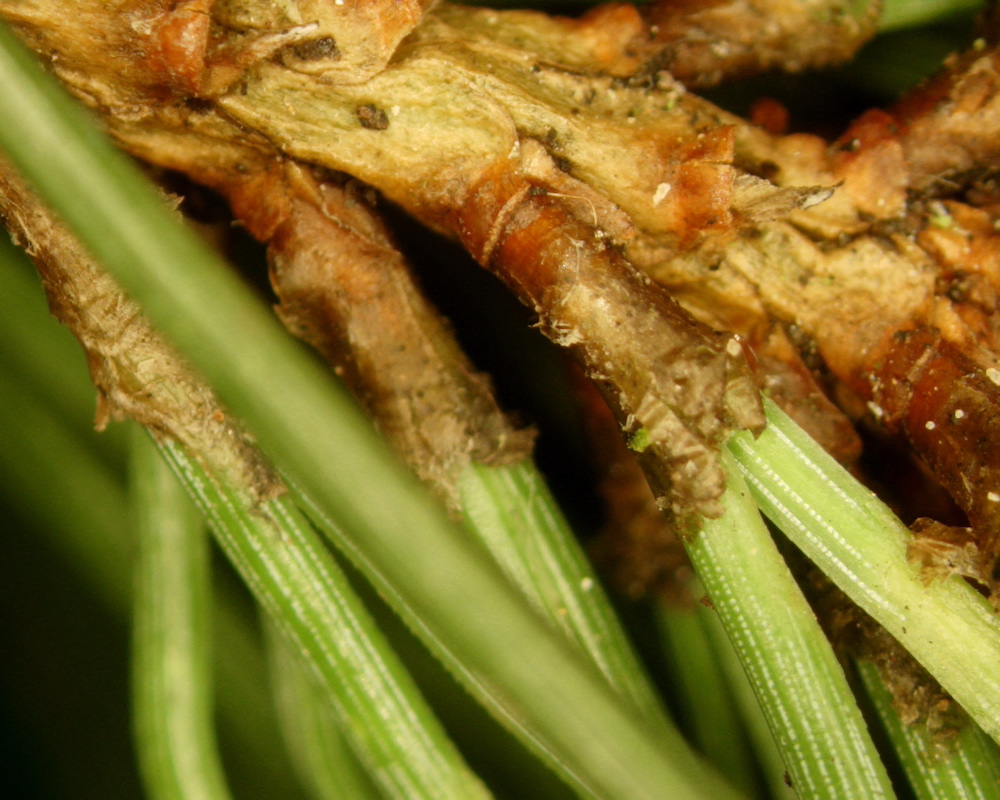Pinus sylvestris L.
Scots pine
The tree tag number relates to the black tree-maintenance tags, usually fixed on the trunk, 2 to 3m above ground level.
The Scots pine is one of the three native conifers in Ireland (the others are yew and juniper). Although native, none of the Scots pines growing in Ireland was thought to be native stock. This is because the Scots pine arrived in Ireland not long after the end of the last ice age, but seemed to have died out some 4000 years ago. Some idea of its former importance in the native flora may be gained from the large areas of pine stumps buried in bogs and under blanket peat, particularly in the Antrim uplands and Donegal.It has been re-planted in Ireland (presumably mostly from Scottish stock) from the 17th century onwards.
New evidence came to light suggesting that a small population of Pinus sylvestris survived in the Burren, County Mayo throughout the Holocene. The article entitled ‘Redefining the natural range of Scots Pine (Pinus sylvestris L.): a newly discovered microrefugium in western Ireland’ by Alwynne H. McGeever and Fraser J. G. Mitchell, June 2016 was published in the Journal of Biogeography (https://doi.org/10.1111/jbi.12761).
The Scots pine is a 2-needled pine like the Austrian pine, but may be distinguished from the latter by the much shorter needles, typically 1-4 inches long (2.5-10cm) and the characteristic reddish colour of the upper branches and trunk which distinguishes it from all other 2-needle pines when mature. There are several specimens of Scots pine in Belfast Botanic Gardens. The example in the photograph (and whose location is given in the box above) is close to the Kelvin statue at the Stranmillis Road end of the gardens.




For more information on the history of pine in Ireland see Flora Hibernica by Pilcher and Hall, Collins Press, Cork
Photos taken in Belfast Botanic Gardens in 2008. Copyright: Friends of Belfast Botanic Gardens.
